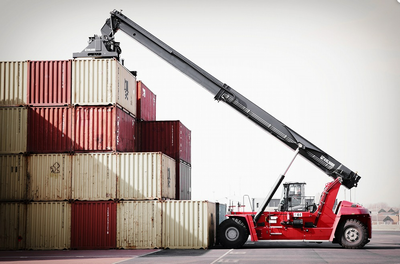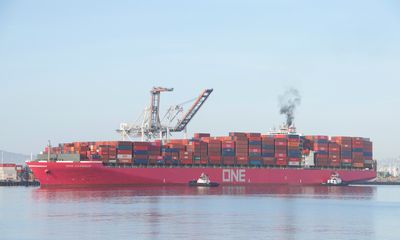 Since Russia’s military invasion of Ukraine on February 24th, two million refugees have fled to Poland and other neighboring countries in the snowy weather with only the clothes they happened to wear. It is even estimated that more than 7 million people may become refugee. The impact of this situation is unimaginable. Russia’s unilateral and unreasonable invasion of Ukraine has been condemned by the entire world. President Vladimir Putin has also terrified the world by suggesting the possibility of using nuclear weapons. Why not stop forcing Ukraine to remain in its own country and make Russia attractive enough to make Ukrainians willing to join the Russian side? It is a relief, at least, that the Russian people are also speaking out against the war. Demonstrations are taking place all over Russia. However, more than 13,000 people have been detained for participating in the demonstrations. Russia has passed an amended law that imposes up to 15 years in prison or imprisonment for spreading false information about military activities. It will no longer be possible to disseminate information other than that released by the Russian authorities. The Russian Constitution guarantees freedom of thought and speech, freedom of communication, and prohibits censorship.
Since Russia’s military invasion of Ukraine on February 24th, two million refugees have fled to Poland and other neighboring countries in the snowy weather with only the clothes they happened to wear. It is even estimated that more than 7 million people may become refugee. The impact of this situation is unimaginable. Russia’s unilateral and unreasonable invasion of Ukraine has been condemned by the entire world. President Vladimir Putin has also terrified the world by suggesting the possibility of using nuclear weapons. Why not stop forcing Ukraine to remain in its own country and make Russia attractive enough to make Ukrainians willing to join the Russian side? It is a relief, at least, that the Russian people are also speaking out against the war. Demonstrations are taking place all over Russia. However, more than 13,000 people have been detained for participating in the demonstrations. Russia has passed an amended law that imposes up to 15 years in prison or imprisonment for spreading false information about military activities. It will no longer be possible to disseminate information other than that released by the Russian authorities. The Russian Constitution guarantees freedom of thought and speech, freedom of communication, and prohibits censorship.
The international community has locked Russia out of SWIFT, which conducts international financial transactions between nations, as measures of sanction to force Russia to stop the war. Russia will find it substantially more difficult to export and import. Russia accounts for about 4% of the world’s crude oil production, and its crude oil exports are also being restricted. International markets are beginning to be affected. The price of WTI crude oil in the U.S. market soared to the $130 per barrel level for the first time in 14 years. The impact on the international economy is enormous. Private companies have begun to pull out of business with Russia. Customs in the European Union (EU) have stopped handling cargoes bound for Russia. Usually, cargoes from Asia to Russia onboard ultra-large container vessels are transshipped to small and medium-sized vessels at the ports of Rotterdam and Hamburg before being transported to Russia. Since this is no longer possible, there is now a possibility that vessels and containers will be held up at European ports, causing further disruption. In addition, the Eurasian Transcontinental Railroad, Siberian Land Bridge (SLB), and China Land Bridge (CLB), which are detour routes from Asia to Europe, have also been stagnant.
With COVID-19 finally coming to a halt and the global economy beginning to work, will Russia’s invasion of Ukraine drive our daily lives into a maze again?
The number of nonfarm employees increased by 678,000 in February from the previous month, according to the U.S. Department of Labor announced on March 4th. The unemployment rate was 3.8%, down 0.2% from January. The spread of COVID-19 has passed its peak, and the U.S. economy, led by consumption, is recovering as strongly as ever.
Shipping Guide cites freight rate index published by Drewry Maritime on March 3rd. The World Container Index (WCI) for the eight main routes in the Asia-North America, Asia-Europe, and Atlantic trade is $9,279.46 per FEU. This is a 2.1% drop from the previous week and the first decline in two weeks, according to the report. However, it says it is still 81% higher than the same period last year and has averaged $9,438 per FEU since the beginning of the year, remaining still higher than the average of $3,071 per FEU over the past five years.
Newbuild container prices for February was $3,300 per 20f, down $100 or 2.9% from January’s $3,400 per 20f. Newbuild container production for February was 108,526TEU (Dry: 97,577TEU, Reefer: 10,949TEU), down 358,325 TEU or 77% compared to January. You will see how unusual January’s production was. Newbuilt container factory inventory in China decreased by 157,796 TEUs to 654,840 TEUs (Dry: 592,628 TEUs, Reefer: 62,212 TEUs).
 Danish shipping research firm Sea Intelligence forecasts that 3.5 million TEUs of empty containers will be stuck in North America in February 2023. Assuming that the number of transport period for transpacific eastbound shipments will shorten from 112 days in mid-February to 45 days by the end of this year, and combining a daily cargo flow model with an annual cargo movement of 19 million TEUs for transpacific eastbound shipments, the number of empty containers in North America that cannot be shipped back for Asia will continue to increase starting this July, and as a result, will reach up to 3.5 million TEUs, which is 30% above the vessel space capable of container empty positioning to Asia. However, the reality is that congestion at the Ports of Los Angeles and Long Beach has not yet been resolved. And in July, there will be a renewal of the ILWU/PMA labor agreement. Discussions are still ongoing, but if the negotiations break down and the strike is started and prolonged, freight rates for shipping companies will remain high and container shortages in China and other Asian countries will reoccur. We hope to avoid further disruption.
Danish shipping research firm Sea Intelligence forecasts that 3.5 million TEUs of empty containers will be stuck in North America in February 2023. Assuming that the number of transport period for transpacific eastbound shipments will shorten from 112 days in mid-February to 45 days by the end of this year, and combining a daily cargo flow model with an annual cargo movement of 19 million TEUs for transpacific eastbound shipments, the number of empty containers in North America that cannot be shipped back for Asia will continue to increase starting this July, and as a result, will reach up to 3.5 million TEUs, which is 30% above the vessel space capable of container empty positioning to Asia. However, the reality is that congestion at the Ports of Los Angeles and Long Beach has not yet been resolved. And in July, there will be a renewal of the ILWU/PMA labor agreement. Discussions are still ongoing, but if the negotiations break down and the strike is started and prolonged, freight rates for shipping companies will remain high and container shortages in China and other Asian countries will reoccur. We hope to avoid further disruption.
Ocean Network Express (ONE) announced on the 4th that it will pay a dividend of $4,132 million (about 477 billion yen) to its parent companies, NYK, MOL, K Line, on the 15th. This follows the interim dividend of $1,687 million (approximately 146.6 billion yen) paid in November 2021. Of course, other shipping lines are also achieving good financial results.
 U.S. President Biden announced on February 28th that he would work with the Department of Justice and the Federal Maritime Commission (FMC) to promote competition among container shipping lines and to lower ocean freight rates, criticizing the three alliances that hold 80% market share for significantly raising rates. I believe this is another major misunderstanding. Liner shipping companies have been facing severe fare competition for a long time. As a result, US Line went bankrupt in 1987, NOL bought APL in 1997, Maersk Line bought Sea-Land in 1999, and thus US carriers disappeared from the market. Since then, many liner carriers have left the market or been merged by other companies. Japanese carriers are no exception. Six Japanese carriers in 1964 re-aligned to three in 1999, and in the process of trying to survive by scaling up, liner business in these three shipping lines were consolidated to Ocean Network Express (ONE) in July 2017. The rise in ocean freight rates began in the second half of 2020, in reaction to the COVID-19 urban lockdown, “stay at home consumption”, and “revenge consumption.” It has only been a year and a half. I believe that this problem will naturally resolve itself once the container ship congestion problem at U.S. ports is resolved.
U.S. President Biden announced on February 28th that he would work with the Department of Justice and the Federal Maritime Commission (FMC) to promote competition among container shipping lines and to lower ocean freight rates, criticizing the three alliances that hold 80% market share for significantly raising rates. I believe this is another major misunderstanding. Liner shipping companies have been facing severe fare competition for a long time. As a result, US Line went bankrupt in 1987, NOL bought APL in 1997, Maersk Line bought Sea-Land in 1999, and thus US carriers disappeared from the market. Since then, many liner carriers have left the market or been merged by other companies. Japanese carriers are no exception. Six Japanese carriers in 1964 re-aligned to three in 1999, and in the process of trying to survive by scaling up, liner business in these three shipping lines were consolidated to Ocean Network Express (ONE) in July 2017. The rise in ocean freight rates began in the second half of 2020, in reaction to the COVID-19 urban lockdown, “stay at home consumption”, and “revenge consumption.” It has only been a year and a half. I believe that this problem will naturally resolve itself once the container ship congestion problem at U.S. ports is resolved.
Nikkei reported on March 8th that Hoa Phat in Vietnam, the largest steel manufacturer in Southeast Asia, will invest VND2.4 trillion (about 12 billion yen) to build a new container manufacturing factory with an annual capacity of up to 500,000 TEU, starting its production this October – December, to be in full production in 2023. The company claims that it will be able to reduce production costs by using steel produced in-house. It seems that the company aims to diversify its business and at the same time to respond to the container shortage. Diversification of container supply locations has begun.
The Constitution of Japan came into effect on May 3rd, 1947. In 74 years since then, Japan has not had a single constitutional amendment. After the war, it has been revised 6 times in the U.S., 27 times in France, and 59 times in Germany. Japanese constitution stipulates in Article 9 the renunciation of war as well as denial of armaments. Some people believe that because of the pacifism of Article 9, there have been no wars. Others say it was because Japan was protected by the U.S. nuclear power.
As we see Russia’s invasion of Ukraine, can the pacifism of the Japanese Constitution defend its own people from the armies of other countries invading Japan? Can you ask them not to attack Japan because Japan has a peace-oriented constitution? Can we Japanese ask the U.S. for help without trying to protect by ourselves? Or do we appeal to them to “talk it over”? How should we defend our own country? A country that cannot defend itself cannot exist. History has proven this. Japanese people, who are taking peace for granted, should take Russia’s invasion of Ukraine as a lesson!
(Translated by Ms. Chizuru Oowada)